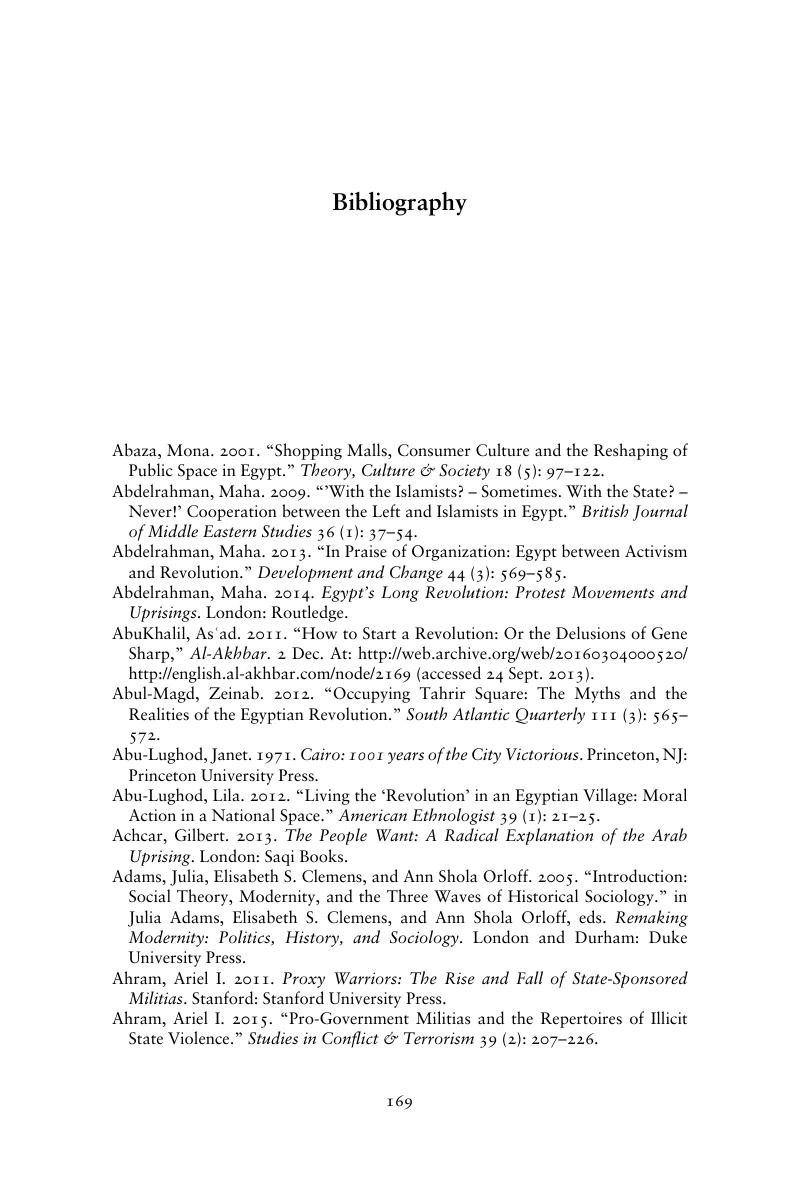Book contents
- Egypt in a Time of Revolution
- Cambridge Studies in Contentious Politics
- Egypt in a Time of Revolution
- Copyright page
- Dedication
- Contents
- Figures
- Tables
- Preface and Acknowledgments
- A Note on Transliteration
- Maps
- Epigraph
- 1 Introduction
- 2 Collective Violence
- 3 Fraternization
- 4 Democratic Transition
- 5 Manufacturing Dissent
- 6 Anti-Coup Mobilization
- 7 Conclusion
- Appendix
- Bibliography
- Index
- Series page
- References
Bibliography
Published online by Cambridge University Press: 04 July 2017
- Egypt in a Time of Revolution
- Cambridge Studies in Contentious Politics
- Egypt in a Time of Revolution
- Copyright page
- Dedication
- Contents
- Figures
- Tables
- Preface and Acknowledgments
- A Note on Transliteration
- Maps
- Epigraph
- 1 Introduction
- 2 Collective Violence
- 3 Fraternization
- 4 Democratic Transition
- 5 Manufacturing Dissent
- 6 Anti-Coup Mobilization
- 7 Conclusion
- Appendix
- Bibliography
- Index
- Series page
- References
Summary

- Type
- Chapter
- Information
- Egypt in a Time of RevolutionContentious Politics and the Arab Spring, pp. 169 - 192Publisher: Cambridge University PressPrint publication year: 2017



